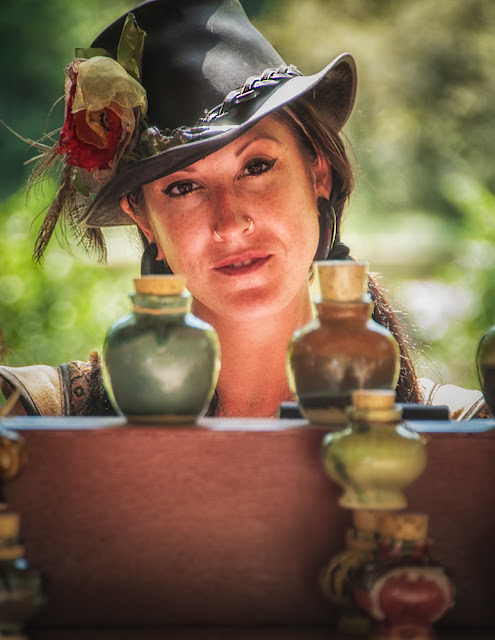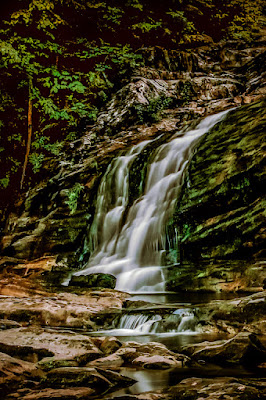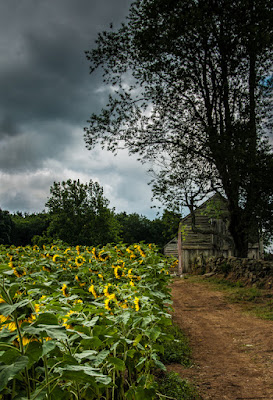It's nice when a photo op walks right up to you. That look on the face of the deer in today's
image kind of says to all. It was a
stare down to see who would move first (and in which direction). I had just dropped the missus off at work and
was leaving the companies property when I saw this deer munching on some
foliage. I slowly stopped the car and
even slower I turned my head. Didn't
want to spook her. She looked up, turned
her head and looked back at me. I hit
the button to lower the window and she just watched the window go down. Still looking at me. I reached into the back seat and grabbed my
camera bag. Fiddled around getting the
camera out and changing to a longer lens and she was still just looking at
me. I took several shots out the
driver's side window and she just stood there looking at me. By now I was thinking this girl might be
daring me. "Come on out of that car
and you'll get a deer hove up your a$$."
Not being the brightest photographer, that's exactly what I did. Slowly pulled the handle on the door, equally
slowly swung the door open and dropped one foot to the pavement. She still just stood there looking at
me. I put the strap around my neck and
rose out of the seat. Finally was
outside the car and she was still doing the stare down thing. I looked down to make some adjustments to the
camera. That's when she started her charge. Thankfully it was into the woods and not at
me. Pulled the camera up to my eye and
snapped off a burst of shots of her white tail bouncing into the forest. To find out how the shot was finished, hit
the "Read More".
Read more!
Heading to Belfast!
10 months ago















